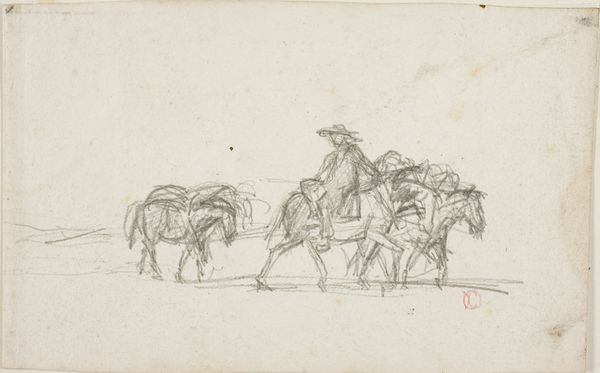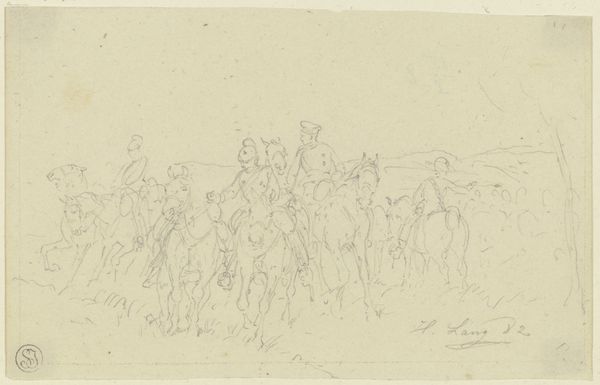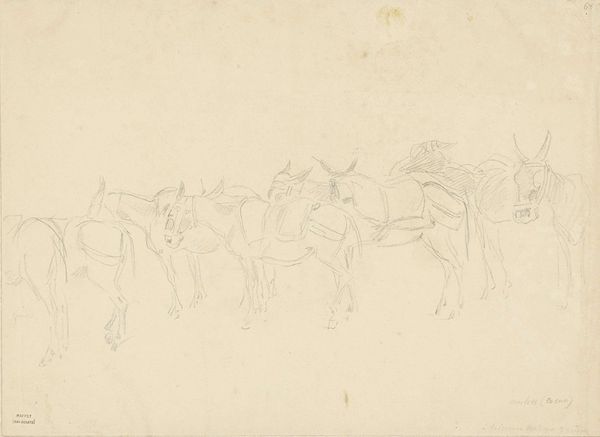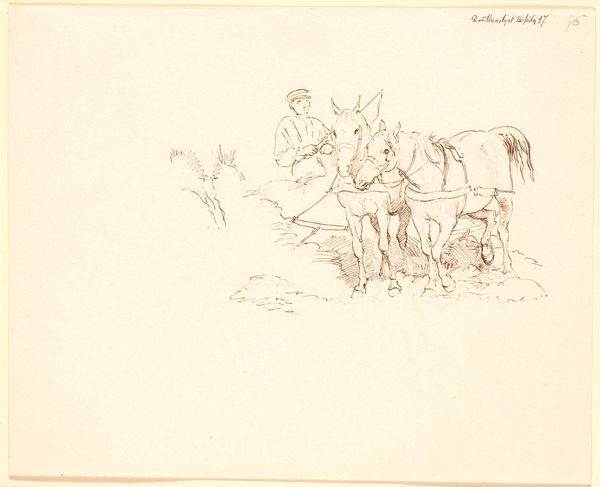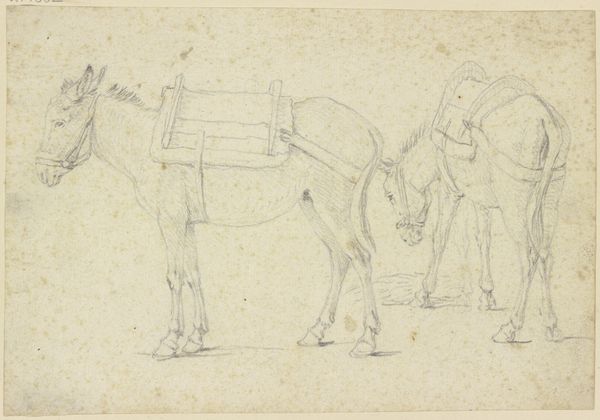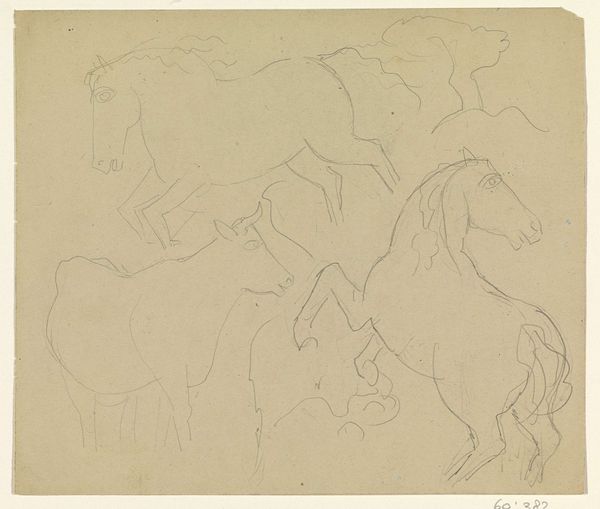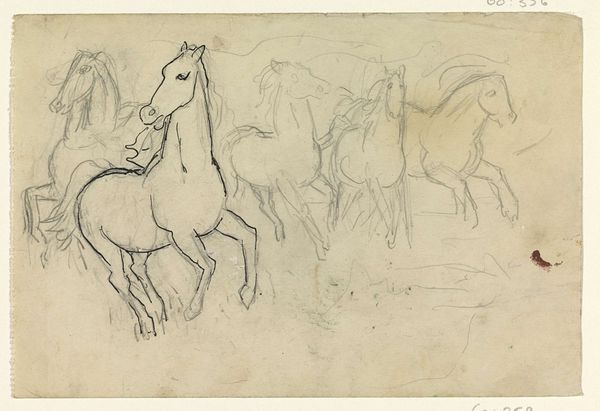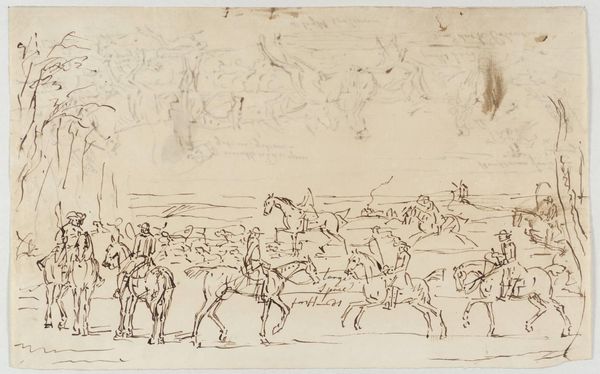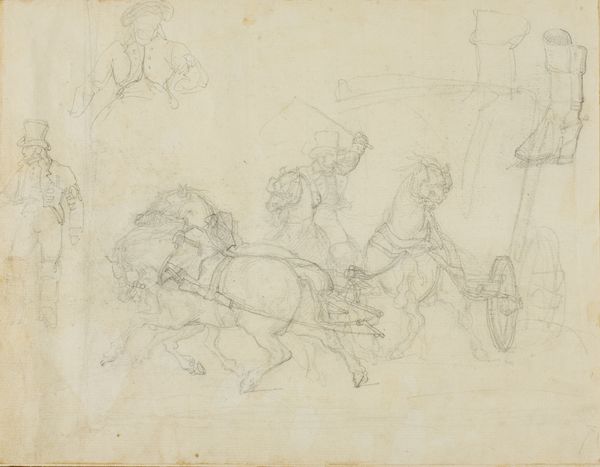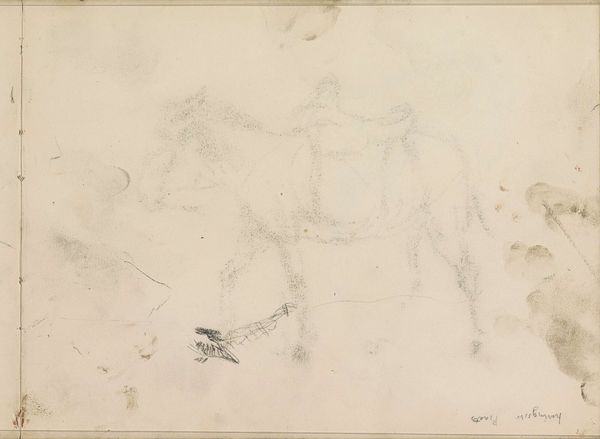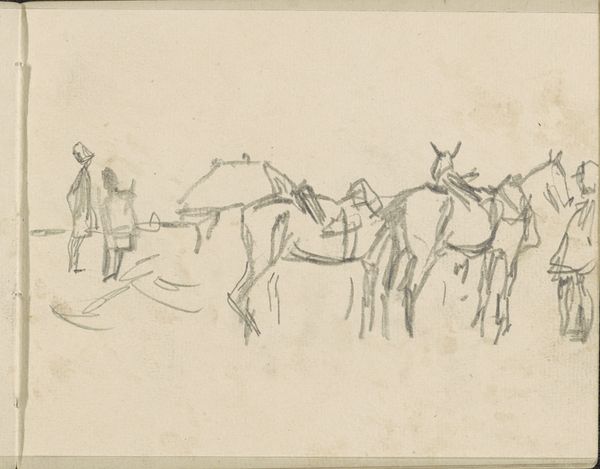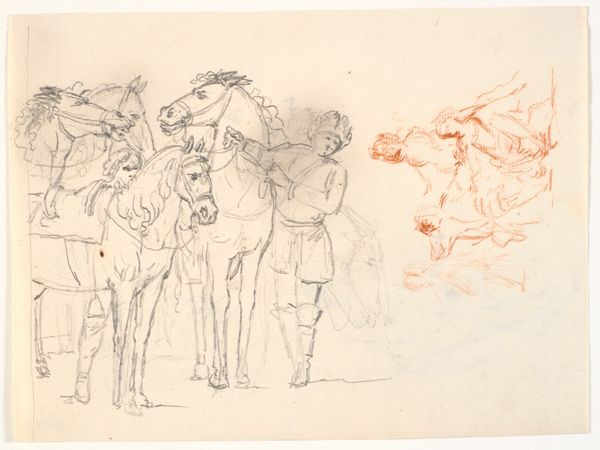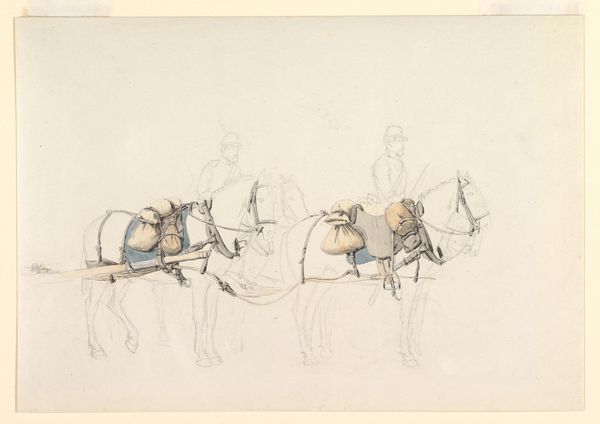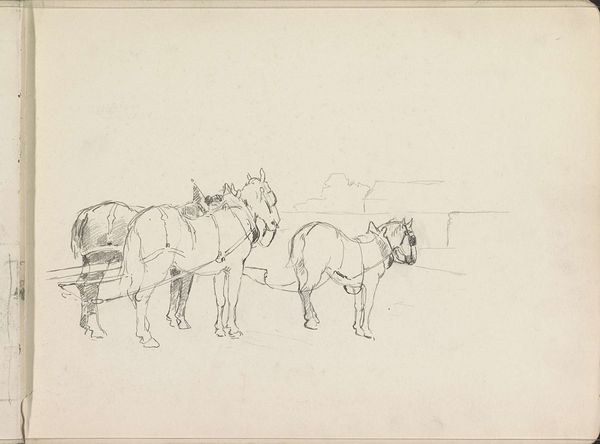
drawing, pencil
#
drawing
#
narrative-art
#
landscape
#
figuration
#
romanticism
#
pencil
Dimensions: 187 mm (height) x 255 mm (width) (bladmaal)
Curator: Here we have "Sketch with Donkey Rider, a Donkey and a Cow" by Martinus Rørbye, dating back to 1830. It's a delicate pencil drawing. Editor: My immediate impression is of a fleeting moment, a quiet journey. It’s so light, almost ghostly, like a memory being gently recalled. Curator: That lightness aligns with the artistic currents of the time. Rørbye was working during the Danish Golden Age, a period when artists were seeking to capture the essence of everyday life and the landscapes around them. We often see an idealization of nature and rural existence in this period, particularly among Romantic artists. Editor: I see that reflected here, but there’s also something vulnerable about this sketch. The thin lines, the unfinished quality—it almost feels like the artist is giving us a glimpse into his process. Considering its time, who did Rørbye expect to see it? Was it practice or something meant for a wider public view? Curator: Great question. Sketches like this often served as preparatory studies. The Danish Golden Age was, institutionally, a very interesting moment in terms of developing national identity and culture, with the Royal Danish Academy playing a central role in training artists, developing conventions and ideas. Sketches helped refine compositions for larger, more polished paintings that were more frequently displayed publicly. Editor: Knowing this, the presence of the donkey rider becomes even more suggestive. It subtly evokes a sense of labour, an alternative perspective from some traditional representations that omitted that visual point. It opens the work to other narratives. It reminds us of who is working, who is benefiting, and the dynamic is charged by political context. Curator: Precisely. There's a push and pull here between an idyllic scene and a subtle depiction of rural life as work, reflecting the social and economic realities of the period. I mean, there were some tensions at that period, that played a vital role later, after the independence movement, between some localist traditions and European cultural centrality, that affected all the Scandinavian peninsula. Editor: Ultimately, I'm drawn to its honesty. It invites us to contemplate not just the picturesque but the broader context within which that imagery emerges. Curator: Yes, this sketch becomes more than just a pretty landscape. It's a lens through which we can examine the society and artistic values of its time. Editor: Absolutely, engaging with both what is present and subtly absent offers avenues to reconsider its moment and ours.
Comments
No comments
Be the first to comment and join the conversation on the ultimate creative platform.
